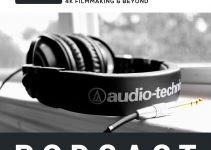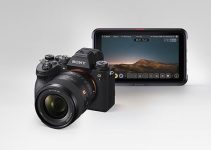Sony’s long-awaited a7S III is still capturing the attention of filmmakers today, many months after its initial release. The only thing about the camera that wasn’t too surprising is that it still takes the crown to low-light shooting thanks to a relatively low resolution 12MP full-frame BSI sensor. Just how good is the a7S III’s ISO performance and, connected to that, how is its exposure recovery?
Dom from LensProToGo happened to do those exact tests by pushing the limits of the a7S III. It’s always nice to see how a camera performs throughout its entire range to see exact where there are and aren’t limits as well as find out how to best handle the camera during shooting.
With a bench test and shooting target, Dom runs through all the a7S III’s ISO settings. Shooting in S-Log3 to UHD 4K XAVC S-I 24p at 10-bit 4:2:2 and 240 Mb/s, you are looking at the best the camera can do internally. The footage is converted to Rec.709.
Starting at ISO 160 you are actually using a “low” ISO setting that is below the camera’s native S-Log3 ISO of 640. Unsurprisingly, ISOs 160 and 200 are perfect. ISO 250 and 320 are negligible in noise and 400 and 500 looking nearly the same.
ISO 640 is the base ISO and performance is, as expected, very good. One extra test here is that they overexposed the camera by a stop and then pull it down in post, which will prove that this is a way to shoot S-Log3 and minimize noise.
Going up again ISO 800 and 1000 start to show some noise, but it’s still perfectly usable. ISO 1250 and 1600 may show noise in very dark shots and it goes up a little more as you push up to ISO 3200.
ISO 4000 is where you really start noticing some noise, but it still isn’t a problem. You are probably okay up through ISO 6400, especially if you are able to overexpose a stop and then pull it down.
ISO 8000 and 10,000 are getting noisy, though I would say the a7S III is still earning its title of low-light king. Interestingly, it actually cleans up a bit when you hit ISO 12,800 – more on that later. Once you hit ISO 25,600 you definitely have noise.
It’s still not terrible. Going up and up to 32,000 and 40,000, you might have some issues with noise and softness. However, Sony appears to have a much better handle on the more difficult and uglier chroma noise. Still, you are getting the green shift now.
Up above ISO 64,000, the image gets a bit softer from the noise and then 102,400 is a very hard upper limit. The “high” ISO settings above this, like ISO 128,000 and 160,000 are a problem. The image is falling apart. I would save these for absolute last resort, or perhaps a documentary where you have no choice.
At the very top end of ISO 409,600, you might as well just not bother. Get some light on your scene if you can cause this will be very difficult to work with in post.
Even if you never use those top ISOs, it does come into play during grading if you need to correct the exposure at all. As underexposure footage will show off noise when you push the exposure back up.
Doing a test at ISO 640 and moving down a stop each time, Dom shows off underexposure recovery against a properly exposed shot.
One stop and two stops are basically the same as the original shot, which is very nice. Three and four stops under you start seeing noise, get some magenta shift, and see it starting to fall apart. Five stops are not going to work out well at all.
For overexposure, at the same ISO 640 base, you will actually find image quality improves. Going one to two stops over and then recovering in post will reduce any noise in your image and actually looks good. It’s recommended to work this way.
Three stops and you have the potential to start losing detail in the highlights if you aren’t careful, but it’s still very good looking. Four stops is very close, but you start to lose some details and five stops isn’t great.
Now, let’s talk about the potential that the a7S III has a dual base ISO sensor. It’s definitely not a true dual base ISO, Sony even said as much since it’s the same sensor in the FX6 where they are more open about the high-sensitivity mode. Still, there is a dramatic improvement for low-light shooting if you use this high base ISO option.
The reason for the cagey attitude from Sony is that true dual base ISO should have near exact same dynamic range and noise performance at both settings and the a7S III, while definitely very good, still isn’t the same as if you use the actual base of ISO 640.
Dom says it’s at ISO 16,000, but actually that was only for pre-production models. Production models moved this down to ISO 12,800 and that can be seen if you go back to the ISO tests earlier in this video. The noise cleans up significantly when he moves from ISO 10,000 to 12,800. I wish Dom did these tests at ISO 12,800. ISO 16,000 should be very close and the tests should work out fine.
Dom does the same exact test for recovery that he did at ISO 640 for ISO 16,000. Again, underexposure seems to recover fine for the first couple stops.
Though the green shift does show up a lot more quickly at the higher ISOs. Three stops is when noise becomes a real problem and at four stops it’s doing some serious damage to the footage.
For overexposure, we actually get very good performance. One to two stops over and you can recover highlights well while benefiting from reduced noise across the whole image.
Three stops gets even cleaner if you can risk your highlights. Four stops shows a little loss in the highlights, but the footage looks surprisingly good. Again, at five stops, you lose detail you’ll want to keep.
If you are thinking of or recently purchased an a7S III there are some things to note.
- When shooting in S-Log3 try to overexpose by one or two stops.
- Stick to the base ISO (640 for S-Log3) or close to it.
- A high-sensitivity mode kicks in at ISO 12,800 which cleans up noise significantly.
Are you going to get the a7S III or have one already?
[source: LensProToGo]
Order Links:
Disclaimer: As an Amazon Associate partner and participant in B&H and Adorama Affiliate programmes, we earn a small comission from each purchase made through the affiliate links listed above at no additional cost to you.
Claim your copy of DAVINCI RESOLVE - SIMPLIFIED COURSE with 50% off! Get Instant Access!




